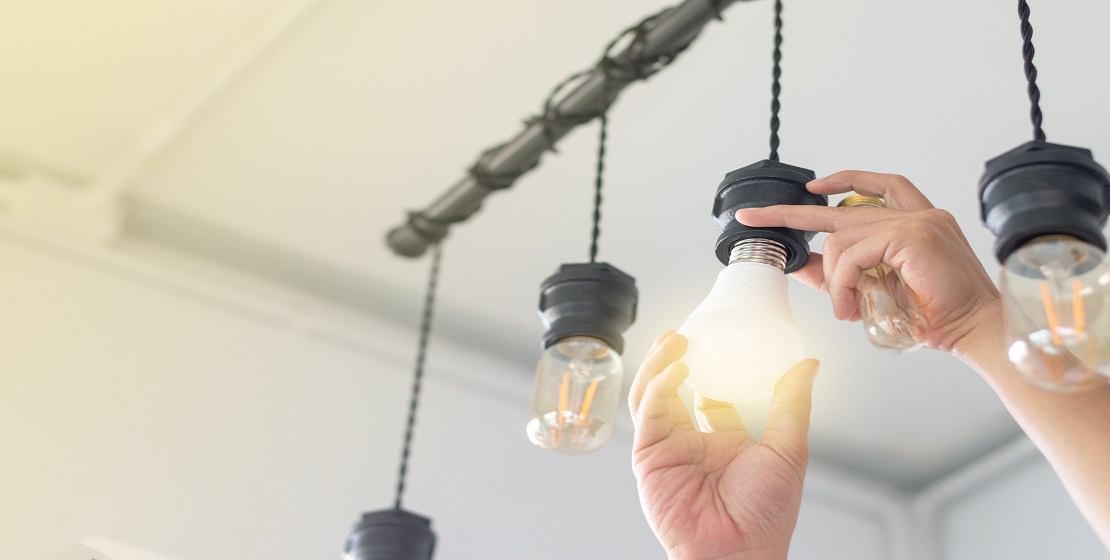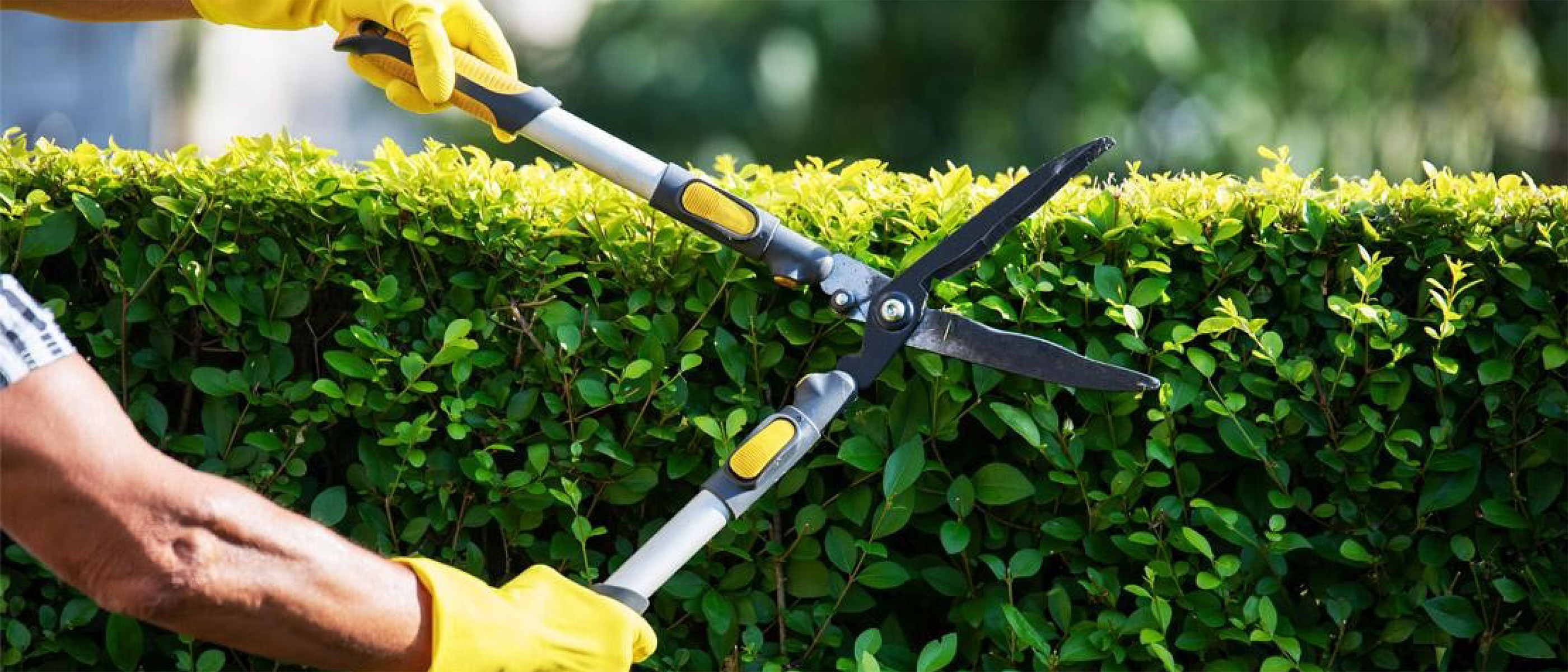
Feb 24, 2021 | Energy Efficiency
It’s been a whole year since the pandemic shifted our daily activities, interactions, and the way we work and attend school. We have some tried–and–true tips that will help you save energy and money no matter how much longer we’re all staying safe at home.
In the kitchen
Here are a few of our favorite ENERGY STAR® tips, to help you save energy as you prepare those delicious home-cooked meals.
Let there be light: Make sure all your light fixtures have LEDs, which use less energy and last much longer than traditional bulbs. And here’s an easy one: When you leave the kitchen, turn off the lights.
Clear the vents: Make sure all your air registers or floor vents are clear of furniture so the air can circulate freely. If your home has radiators, place heat-resistant reflectors between the radiators and walls.
Scrape to save: You can save water by scraping your dishes clean instead of rinsing them before placing them in the dishwasher. And, only run the dishwasher when it’s full.

Flip the fridge: Older refrigerators can use 20% more energy than ENERGY STAR® certified models. So, if your fridge is a relic, consider an upgrade. Also, if you have an old refrigerator running in the garage or basement, think about making a change.
Fix those faucets: Hot water leaking at a rate of one drop per second can waste up to $35 in electricity per year. Plus, leaks obviously waste water and, let’s be honest, can be annoying. Fix those faucets and save!
Electronics
Taking these simple steps to make your home more energy efficient can save you money whether you’re working from home or back to business as usual.
Screensaver = energy waster. Your computer and monitor are still fully powered when a screen saver turns on. Save energy by enabling sleep mode on these devices or shut them down when you’re not using them.
Use power strips. Household electronics tend to draw small amounts of power when they’re on standby mode. Power strips make it easy to power down your workstation with the flip of a switch. Smart power strips sense and cut power when electronics go into standby mode. It’s a small investment that could save you money in the long run.
Let the light in. Keep the blinds and curtains in your home open. Letting more sun in will help keep your home warm so your heating system doesn’t have to work quite as hard. Plus, natural light from your windows is great for all those video calls. 
For more energy saving tips, visit savewithppl.com

Aug 7, 2020 | Energy Efficiency
While you’re spending most of your spare time outdoors enjoying the summer sun, you could be wasting electricity inside the house. Routine cleaning does more than leave your home looking great. It can also help you save money every month.
Whether you’re dusting or disinfecting, here are some ways to reduce your energy use, and save a few bucks:
- Redirect ceiling fans. Change the direction of your ceiling fans according to the season. In the summer, they should rotate counter-clockwise to push cool air downward. That will help keep your rooms cooler and give your air conditioning a break.
- Clean your oven. A clean oven can reach temperature faster and cook more efficiently. Self-cleaning ovens make the process easier, and they’re more energy efficient because they have better insulation. Only run the cleaning cycle on your self-cleaning oven once a month, but do it immediately after you use the oven. You’ll use less energy because the oven will already be hot.
- Dust your electronics. Televisions, smart speakers, DVD players, video game consoles, and internet routers are just a few surfaces where dust loves to settle. Keeping these areas dust-free helps motors run better, extending their shelf life and performance.
- Vacuum refrigerator coils. When’s the last time you looked behind your refrigerator? If it’s been a while, you may want to roll it out. Dust tends to build up on the coils, forcing your refrigerator to work harder to do its job. So, go ahead, give it a quick vacuum or wipe-down.
- Tune up your HVAC system. Heating and cooling can add up to 50% of your in-home energy use. Routine HVAC maintenance may require a small out-of-pocket expense, but the return on investment is incomparable. Regular maintenance keeps your system running efficiently throughout the year.
PPL’s Energy Efficiency Programs can offer simple tips and tools to reduce your electricity use inside and outside your home. Check out more ways to save.

Jul 29, 2020 | Energy Efficiency
Warm summer days are here!
Whether you’re lounging outside or catching up on home projects, these five tips will help you save energy — so you can put more money toward that beach trip and less toward your electricity bill.
- Plant a shade tree. Go green — literally. In Pennsylvania’s climate, shading the south and west sides of your home from summer sun is the most cost-effective way to counteract solar heat and lower your air conditioning costs. In addition to trees, well-planned landscaping that includes bushes, shrubs, vines or ground-cover plants can reduce your home’s air conditioning costs by up to 50%.
- Install smarter lighting. Your porch or front light can benefit from LED bulbs, which use up to 90% less energy than standard bulbs. For landscape lighting, consider low-voltage fixtures or solar-powered lights. You can also install timers or sensors so your lights don’t need to stay on all day.
- Seal from the outside. To help keep air conditioning inside, inspect the outside of your home for any leaks that might let that cool air escape. Caulking around your windows is a simple and inexpensive way to seal air leaks when new windows aren’t in the budget. Check the weatherstripping on exterior doors to see if there are any gaps. A combination of new weatherstripping and a door sweep (to fill gaps along the bottom of the door) can save on your utility bills in summer and winter.
- Reach for manual tools. Swapping power tools for a little elbow grease can save you money. Here are some ideas: Shape your shrubs with a hand pruner instead of a power hedge trimmer. Reach for clippers rather than the weed whacker. Opt for a rake over a leaf blower.
- Cool down your roof. Check your roof for air leaks and insulate it from inside the attic as a way to save on your air conditioning bill. When it comes time for a new roof, choose a cool roof, which uses special coatings that reflect more sunlight and absorb less heat than a regular roof. Bonus: Decreasing your roof’s temperature may actually extend its life.
PPL’s Energy Efficiency Programs offer simple tips and tools to reduce electricity use inside and outside your home. Check out more ways to save.

May 8, 2020 | Energy Efficiency
Tips to save while you’re home
Many of us are spending much more time at home – all day, every day. That means working from home, attending classes at home and using our appliances, devices and other electronics A LOT. Here are a few tips and tools – courtesy of PPL’s energy efficiency program – that can help you save energy and money without leaving the comfort of your own home or making an investment. Our free Online Energy Assessment provides you with energy saving recommendations and offers personalized for your home or you can use the guiding principles below.
Make your home more efficient.
Check your thermostat. Heating and cooling is often where most homes use the most energy. Most of us are still running our heat – and 68° F is the recommended heating setting for energy efficiency. For those who already have a programmable thermostat, it should automatically adjust the temperature for optimal energy use. This is a good time to review your settings to make sure your thermostat matches your family’s new schedule. Lowering the thermostat is one simple change, and you can always snuggle up with an extra blanket or layer your clothing to stay as comfortable as possible.
Check your air vents and registers. If they’re blocked by furniture or drapes, the air won’t reach the rest of the room.
Use hot water wisely. Water heating accounts for the second largest use of energy in most homes. There are a few things you can do to help cut this down. First, confirm the temperature on your hot water heater. Setting its thermostat to 120 degrees is another easy way to save. Short showers use less hot water than baths. Using less hot water means less energy used.
Optimize your kitchen. Many of us have a full house for the foreseeable future – and the kitchen is another opportunity to save. You can save yourself the energy from firing up the stove or oven by using your microwave or toaster oven to reheat or cook small portions. Use a covered kettle or pot, or electric kettle to boil water. It’s faster and uses less energy.
It’s also important to match the cooking method to the meal. When the weather permits, fire up the grill. When it doesn’t, using a slow-cooker and pressure cooker more are good alternatives. They’re convenient and use less energy than your stove and oven. And if you need to use the oven, make multiple items to get the most use for your energy dollar. And be sure to match the size of your pots and pans to the heating element for efficient cooking.
Food storage is also particularly top of mind right now. Don’t keep your refrigerator or freezer too cold. Recommended temperatures are 35° F – 38° F for the fresh food compartment and 0° F for separate freezers for long-term storage. You should cover liquids and wrap foods stored in the refrigerator. Uncovered foods release moisture and make the compressor work harder, using more electricity.
When it’s time to clean up, be sure you’re running a full dishwasher. Running partial or small loads wastes energy.
As the laundry piles up. Whether we’re stuck home or out and about, one thing is certain: Laundry never stops. When possible, wash your family’s laundry with cold water instead of hot and wait to wash full loads. Hot water is typically only necessary for very dirty laundry. And when it comes to laundry, don’t forget to clean the lint filter on your dryer. Clogged filters can prevent the dryer from doing its job efficiently.
Home office and electronics. Make it a point to turn off the computer and monitor or unplug chargers when they are not in use. Many electronics still use power even when they’re in standby mode. To help, plug your home electronics into power strips. With the flip of a switch, you can turn the power strip off when the equipment is not in use.
Last one out, turn off the lights. Since we use and need lighting throughout our homes, it’s important to remember that even something as small as a nightlight uses energy. We know how important it is to turn out the lights when we’re not in the room and use daylight when possible.
It may seem like you’re chasing your kids around shutting off lights all week – but it’s also important to have energy saving bulbs, like LEDs in the fixtures you use most. And on sunny days, take advantage of natural sunlight as well.
Making these changes part of your regular routine is easy, and can you get the most out of your energy dollars.
Explore More Tips to Save

Mar 12, 2020 | Energy Efficiency
It’s time to open the windows, break out the mop and start cleaning.
Spring cleaning is the perfect time to think about energy efficiency. Work these seven tips into your routine to save energy and money.
- Change the direction of airflow on your ceiling fan: In the winter, the fan should rotate clockwise to push warm air toward the floor. In spring, switch the direction so the blades draw air upward, cooling the room with constant airflow.
- Keep your blades clean: While you’re up there changing the direction of your ceiling fan, dust the blades. This will keep the fan running efficiently. This is also a good time to check for dust around the motor housing.
- Install window treatments: Energy-efficient window treatments or coverings – such as blinds, shades and films – do more than improve the look of your home. They also slash heat gain when temperatures rise, reducing your energy costs.
- Bring in sunlight: During daylight hours, switch off artificial lights, open the curtains and use sunlight to brighten your home.
- Service your air conditioner: Easy maintenance, like replacing or clearing air filters, can lower your cooling system’s energy consumption by up to 15%. Spring cleaning could also serve as a reminder to call your HVAC professional for a thorough cleaning to make sure the system is performing like it should.
- Cook outside: On warmer spring days, keep the heat out of your home by using an outdoor grill instead of your stove or oven.
- Update your landscaping: Believe it or not, your landscaping can also improve your home’s comfort and lower your energy bills. On average, a well-designed landscape saves enough energy to pay for itself in fewer than eight years. Check out energy.gov for the top three landscaping strategies by climate.
Do you have any other energy efficient spring cleaning tips? Tweet us @pplelectric so we can share them with our customers.







